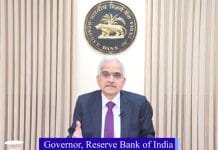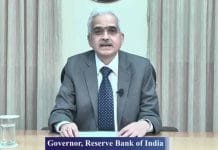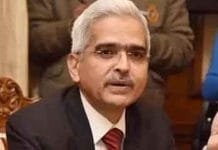
S&P Global Ratings has once again reaffirmed its growth forecast for India at 6.8% for the financial year 2024-25, showcasing confidence in the country’s ability to maintain its momentum despite global economic uncertainties. This projection comes alongside significant insights into how India’s economic landscape will evolve, driven by various domestic and global factors. With this updated forecast, S&P Global Ratings offers a closer look at India’s growth trajectory, the role of the Reserve Bank of India (RBI) and expectations for interest rate cuts in the near future.
India’s Economic Resilience: Sustaining Growth Amid Global Challenges
India has shown remarkable resilience over the past few years, despite facing disruptions from global economic challenges, inflationary pressures, and geopolitical tensions. The retained GDP growth forecast of 6.8% for FY 2024-25 emphasizes India’s solid growth potential. This forecast remains crucial as it underscores the country’s ability to navigate through tough circumstances while maintaining a relatively steady growth trajectory.
In comparison to FY 2023-24, where the economy expanded at a robust 8.2%, the 6.8% growth rate for 2024-25 represents a normalization of growth rates. The previous year’s higher growth was partly due to pandemic recovery efforts and a surge in post-lockdown activities. While the projected slowdown might raise concerns, it reflects more balanced, long-term growth that sets the stage for sustainable economic expansion.
High Interest Rates and Their Impact on Demand
One of the key factors contributing to the slightly tempered growth forecast is high interest rates, which have been in effect since early 2023. According to S&P Global Ratings, elevated interest rates in the April-June 2023 quarter had a noticeable impact on urban demand. The tightening of monetary policy, aimed at controlling inflation, led to a cooling of consumption, particularly in sectors such as real estate and automotive. This, in turn, contributed to a moderation in overall GDP growth during the quarter.
Despite the slower growth in the first half of the year, S&P is optimistic that urban demand will gradually recover as interest rates ease. The Reserve Bank of India is expected to play a pivotal role in supporting this recovery through its future monetary policy actions.
Anticipated Interest Rate Cuts by the RBI
In a move closely monitored by analysts, S&P Global Ratings expects the RBI to begin cutting interest rates as early as October 2024. This would mark the start of a monetary easing cycle aimed at stimulating economic growth while keeping inflation under control. The rating agency predicts that the RBI could reduce rates twice in the current financial year, which could provide much-needed relief to consumers and businesses, boosting investments and consumption.
The decision to cut rates is expected to coincide with an improvement in inflation conditions. With inflationary pressures likely to recede in the second half of FY 2024-25, the RBI’s focus will shift from purely inflation-targeting measures to growth-stimulating initiatives. By lowering borrowing costs, the central bank can help revive sectors hit hardest by high-interest rates and spur a broader economic recovery.
Solid Growth Outlook for FY 2025-26
Looking beyond the current fiscal year, S&P Global Ratings has retained its GDP growth forecast for FY 2025-26 at 6.9%. This projection reflects the sustained strength of the Indian economy as it continues to grow at a steady pace, supported by structural reforms, digitalization, and improvements in infrastructure.
With global economic uncertainties and financial volatility affecting several major economies, India’s robust growth forecast stands out. This optimistic outlook is supported by the country’s diverse economic base, including its strong services sector, a growing manufacturing hub, and resilient agricultural outputs. Additionally, the government’s focus on infrastructure development, through initiatives like Make in India and Atmanirbhar Bharat, plays a critical role in fostering long-term growth.
Inflation and Growth: Balancing Priorities
One of the central challenges facing policymakers in India is striking the right balance between inflation control and economic growth. The RBI has been proactive in raising interest rates over the past year to curb rising inflation, which was driven by global commodity price shocks and supply chain disruptions. As inflation begins to ease, thanks in part to the RBI’s measures, the focus will gradually shift toward sustaining growth without letting inflation resurface.
S&P Global Ratings highlights that India’s monetary policy is well-positioned to adapt to changing economic conditions. With inflation likely to moderate in the coming months, there is room for the RBI to recalibrate its stance, supporting growth through targeted rate cuts and liquidity support to key sectors of the economy. The delicate balance between these two priorities will be crucial for India’s long-term growth trajectory.
Sectoral Performance: Key Drivers of Growth
Services Sector
India’s services sector continues to be a major driver of GDP growth, contributing significantly to the economy’s overall performance. Industries such as IT services, telecommunications, financial services, and tourism have remained resilient, even during periods of economic slowdown. S&P Global Ratings notes that the services sector is poised for continued growth, with digital transformation and increasing global demand for IT and BPO services acting as key catalysts.
Manufacturing and Exports
The Indian manufacturing sector has also experienced substantial growth, benefiting from government initiatives and increased foreign investment. S&P’s projection of steady growth for India hinges partly on the success of the ‘Make in India’ campaign, which aims to bolster domestic production and reduce dependence on imports. Sectors such as automobiles, pharmaceuticals, and textiles are expected to lead the way in contributing to manufacturing output and export growth.
Additionally, India’s export sector is likely to benefit from improved global trade relations and demand for Indian goods in international markets. As global supply chains recover, Indian exporters are expected to capitalize on increased trade flows, particularly in key markets like North America, Europe, and Asia.
Infrastructure and Investment
Another key pillar supporting India’s growth is the government’s infrastructure development agenda. Large-scale investments in transportation, energy, and digital infrastructure have provided a foundation for long-term growth. Public-private partnerships (PPP) in infrastructure projects are also expected to attract more foreign direct investment (FDI), further supporting economic expansion in the years to come.
RBI’s Path Forward: Inflation Control and Economic Growth
As the Indian economy moves into FY 2024-25, all eyes are on the RBI’s upcoming policy review. With S&P Global Ratings forecasting rate cuts in October 2024, the central bank’s decisions will have far-reaching implications for growth, inflation, and the broader economic outlook. By strategically reducing rates while maintaining inflation within the target range, the RBI can steer the economy toward a period of sustainable growth.
The RBI faces the dual challenge of balancing inflationary pressures while fostering conditions conducive to investment and consumption. Its actions, particularly in the context of rate adjustments, will be pivotal in ensuring that India’s growth forecast remains on track and that inflation stays within manageable levels.
A Bright Economic Outlook for India
With a growth forecast of 6.8% for FY 2024-25 and expectations of rate cuts in the near future, India’s economic outlook remains positive. The combination of structural reforms, digital transformation, and targeted monetary policies will continue to support the country’s growth potential in the coming years. By focusing on both inflation control and economic expansion, India is well-positioned to weather global challenges and emerge as a leading growth economy in the Asia-Pacific region.



















